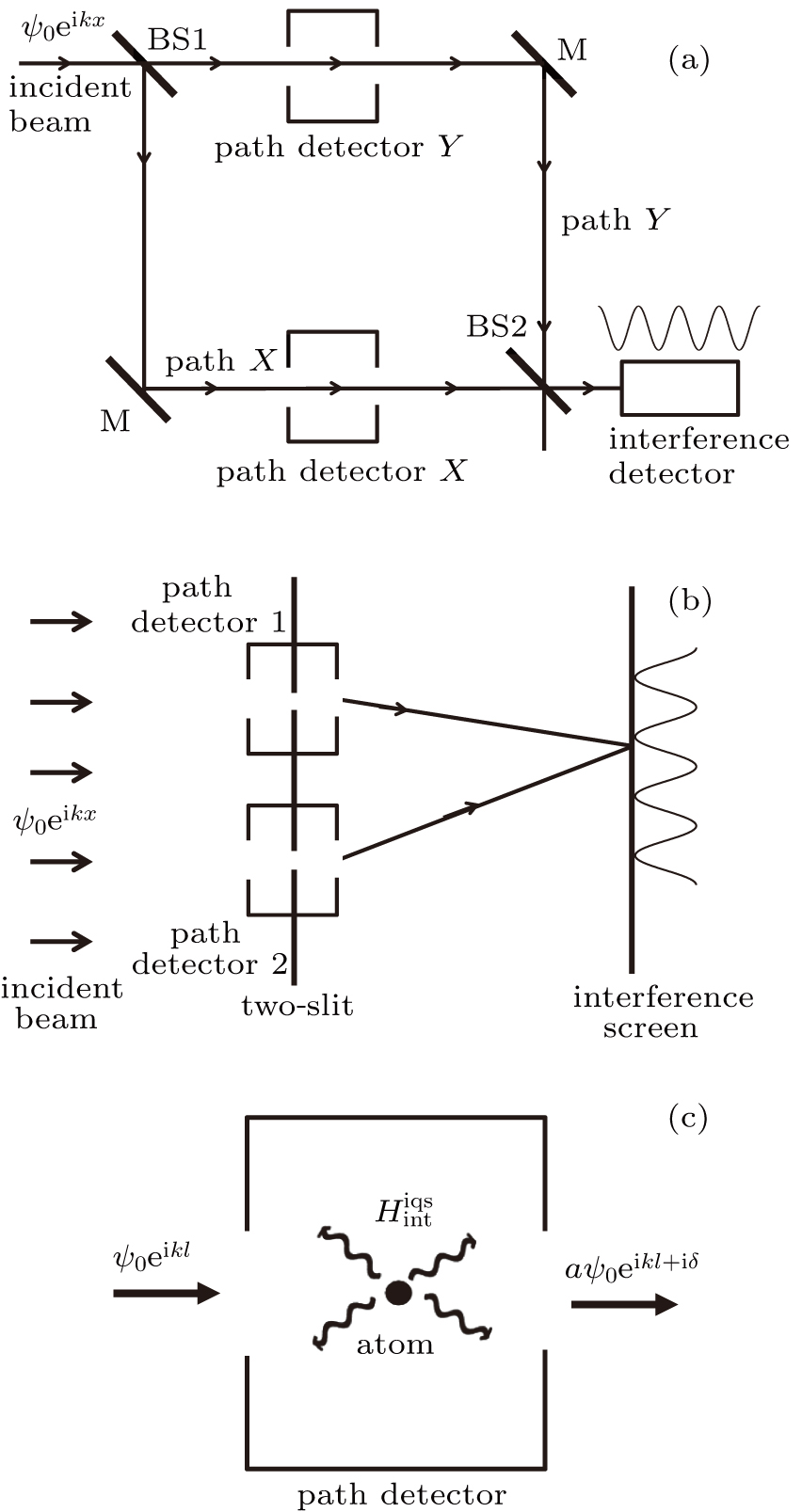Atom interferometers with weak-measurement path detectors and their quantum mechanical analysis
Schematic illustration of classical strong-measurement atom interferometer used to test the WPD for atoms in the scheme of (a) Mach–Zehnder two-arm interferometer and (b) Young’s two-slit interferometer involving the crucial composite device of (c) the strong-measurement path detector. The SM-AI includes historical schemes of AI such as Einstein’s recoiling slit and Feynman’s light microscope. Each SM-PD is designed to probe unanimously the passage of the atom via directly and strongly interacting with the atom center-of-mass, thus inducing an inevitable perturbation to the atom wave function as characterized by a random phase shift δφ of large strength in each channel of AI. The action of SM-PD thus smears out the interference fringe pattern in the output observation screen, upholding the principle of WPD via the mechanism of the Heisenberg’s position–momentum uncertainty relation.
